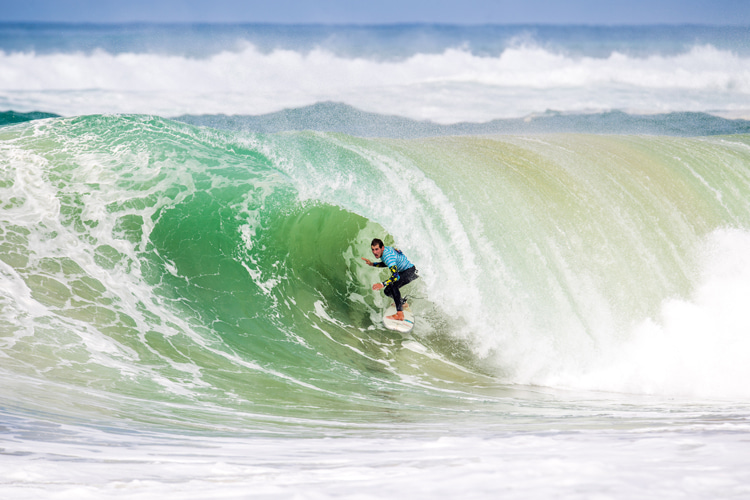
Epilepsy is a neurological condition where the brain occasionally produces bursts of abnormal electrical activity.
These bursts trigger seizures, which are fundamentally involuntary physical, sensory, or awareness changes.
A person is usually diagnosed with epilepsy after having two or more unprovoked seizures that are not explained by factors like fever or low blood sugar.
Globally, epilepsy affects around 50 to 52 million people as of 2021-2024, or about 0.5 to 1 percent of the global population.
To put it simply, roughly 5 to 10 out of every 1,000 people live with active epilepsy.
But Columbia University researchers concluded that 1 in 26 people (3.85 percent) will develop epilepsy at some point in their lives.
The figure can be transposed to the surfing community. If there are 20 million surfers worldwide, around 150,000 have epilepsy.

Causes and Symptoms of Seizures
Medical experts and scientists stress that about 50 percent of cases have no identified cause.
Other causes include genetic factors (30-40 percent), and then brain injuries (from trauma, stroke, tumors), infections or developmental problems affecting the brain, and perinatal injury or congenital issues, especially in children.
When we talk about seizures, it’s easy to figure out how it is not compatible with surfing.
Symptoms depend on where seizure activity starts and how it spreads.
For instance, the so-called focal seizures begin in one part of the brain and may cause strange sensations, tingling, muscle stiffness, altered awareness, or unusual emotions.
On the other hand, generalized seizures affect the whole brain, often resulting in loss of consciousness, body stiffening and jerking movements, possible loss of bladder or bowel control, and confusion or unresponsiveness afterward, sometimes even a “post‑seizure haze” (postictal state).
Seizures can last from a few seconds to minutes.
A single seizure doesn’t always mean epilepsy – two or more unprovoked seizures are required for diagnosis.
There are three ways to control epilepsy: medication, surgery, and lifestyle strategies.
Up to 60-70 percent of people achieve seizure control with medication. The other 30 percent are considered drug-resistant.
For the latter group, and when seizures start in one brain region, surgery may remove or disconnect the seizure focus.
In their daily life, people can also identify and avoid seizure triggers (for example, stress, sleep deprivation, flickering lights, dehydration) to help reduce the risk.

Assessing Pros and Cons
As we’ve seen above, surfing with epilepsy suggests a dangerous combination.
If you’re having a seizure in the ocean, you can basically drown in seconds.
As an anonymous surfer shared online, this is a risk surfers cannot take lightly.
“If you’re with her in the water, you would need to manage her unconscious and seizing, and get her all the way to shore,” and added, “Even waist deep, it would probably be impossible. I always know there is a chance I could die.”
And another wrote, “If she’s only been on meds for three months, I would wait. You don’t know how often she will have seizures yet.”
Surfers with epilepsy emphasize: never surf alone, stick near the shore in easy waves, and always have someone nearby who knows your condition.
Even wave riders who’ve been seizure‑free for months say that ocean unpredictability changes everything.
Some, however, are just willing to take the risk.
“Nobody was interested in coming with me anyway, so I had to just send it. It’s been 11 years and I’m still around.”
All water sports – surfing, swimming, snorkeling – are considered high‑risk for people with epilepsy.
To make these activities safer, key precautions include having a buddy, wearing a proper life vest, and making sure someone nearby understands seizure first aid.
It is also recommended that medical alert IDs be used and medication routines be maintained strictly.
Everything beyond this is a risk a surfer decides to take or not.
In 2022, Hawaiian surfer Kalani David passed away after suffering a seizure while surfing in Costa Rica.
The Jared Muscat Case
Jared Muscat is a surfer who has been speaking openly and publicly about his epilepsy.
Diagnosed at 17 with focal cortical dysplasia, his doctor told him surfing could kill him.
He replied, “If you want me to be stress‑free, I can’t be salt‑free.”
To keep surfing, Muscat adapted to the new reality, took medications reliably with reminders, and reversed unhealthy habits.
A ten‑day coma after a seizure became a wake‑up call.
Nevertheless, Jared kept surfing, kept advocating, and in March 2018 had brain surgery. Since then, he’s been seizure‑free almost entirely, with a clearer mind and less medication.
The California surfer has organized paddles and surf lessons for epilepsy awareness, participated in events like “Seize the Wave,” and built support networks for other surfers.
He advises every surfer with epilepsy to get special life vests or wetsuits that help keep the body and airways afloat, to always surf with someone trained in seizure response, and to listen to yourself.
“Let the ocean decide what you surf – don’t paddle out if you don’t feel comfortable.”
Ultimately, it’s up to each surfer to assess their own risk-reward scale.
If you decide to go, ideally bring a safety‑trained buddy, ideally a confident swimmer, and try to stay in shallow, gentle waves close to shore.
Always talk to your doctor about your control level, but have in mind that seizure‑free days don’t eliminate the risk at sea.
Words by Luís MP | Founder of SurferToday.com


Leave a Reply